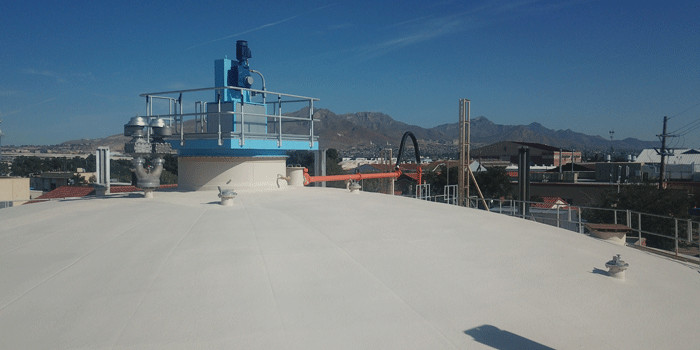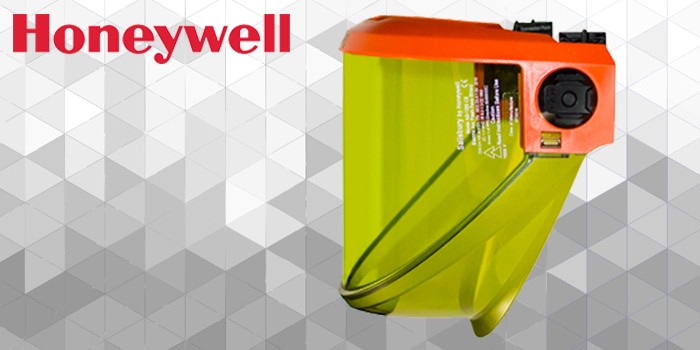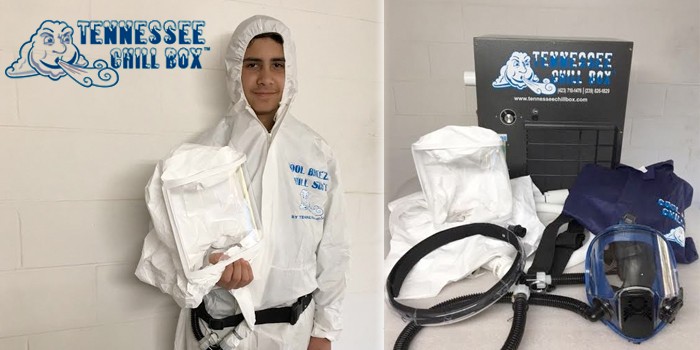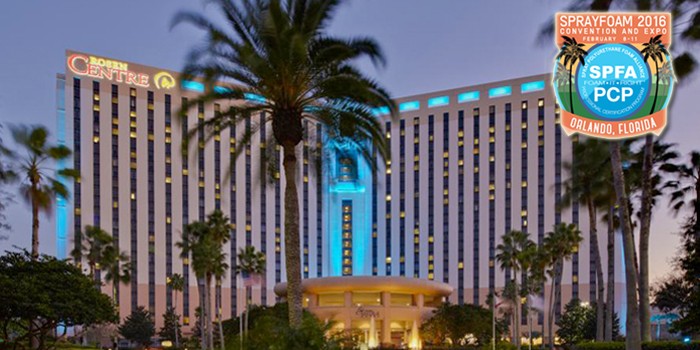Introducing a Safer System Process
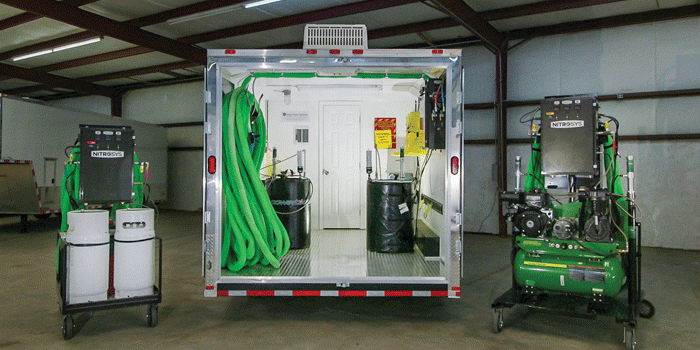

Spray Foam Magazine – Show Issue 2020 – Operating a family business can be rewarding, yet sometimes challenging. It may also create an extra passion and drive which other establishments may not naturally possess. This craving and desire for accomplishment will often translate into innovation, and this is exactly what has happened with Spray Foam Systems (SFS).
A family business SFS was established in Greensboro, Georgia, and it is owned and operated by T.J. and Meghan Peters. The company is always looking for new and innovative ways to help their clients and the industry progress. T.J. reminisces about his early years in the spray foam insulation industry. “I started in the spray foam business in 2006 with my early years of SFS spent manufacturing the Nitrosys and ProPAK products, along with servicing and supporting Graco equipment. During that time period, I spent many years traveling all over the U.S. training contractors and applicators on how to properly apply SPF products and services.”
Most recently, SFS noticed an industry necessity for safer ways to process SPF, so they created the Nitrosys HVLP System. It’s a high volume, low pressure spray foam proportioner, which is designed to process and spray all of the existing high pressure and low pressure spray foam systems available on the market today.
Quizzing T.J. on why innovation is so important within his company’s business model, he explains, “Innovation has always been an area that we have focused on. We realize that in an industry growing and changing as fast as ours, it’s important to constantly invent. We’ve always strived to be innovators and help push our industry to the next level. I personally enjoy spending time with our product development and marketing teams, and I have a passion for working with them to push innovation into the market.”
The new Nitrosys HVLP System has been upgraded to include 240V power, 10000 Watts of Heating Capacity, up to 310 feet of Greenflare Heated Hose. The new Nitrosys HVLP system is additionally operated with an HMI (Human Machine Interface) powered by a PLC. This new technology allowed SFS to integrate Nitrosys with new software technology, allowing for future updates and software upgrades. The advanced PLC also features a modernized local data logging system, allowing contractors to get in-depth data recording off of the Nitrosys HVLP machine.
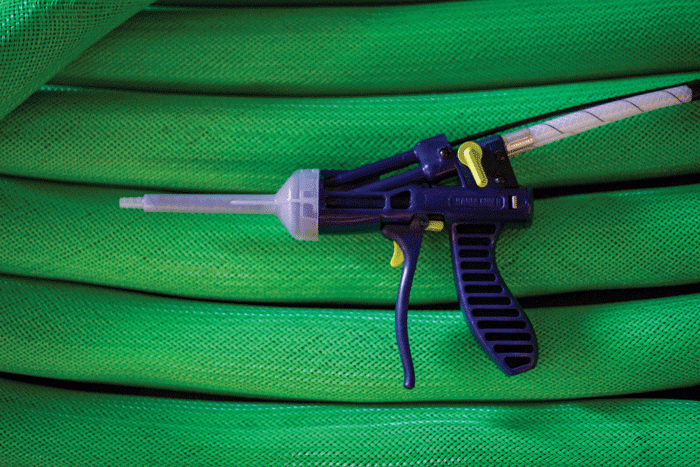
“Traditional spray foam proportioners are built to process spray foam equipment with a high pressure impingement mix methodology. Up until the release of Nitrosys, there were not any equipment systems which could process traditional formulations at lower pressures. The Nitrosys line of equipment processes all high pressure chemistries through a mixing methodology known as ‘air nucleated static mixing,’” T.J. clarifies.
This type of methodology utilizes air to help create velocity inside a mechanical mixing element, which results in a high quality mix at pressures of less than 250 psi. The new equipment and mix methodology enables the industry to depend on a safer application method for mixing existing chemical systems.
SFS wanted to verify the new products met or surpassed the physical properties found on the technical data sheets published. In order to do this, they worked with multiple manufacturers in the market to determine the processing methods reached the desired results.
SFS united with ICP Building Solutions Group to develop the new HVLP chemistry, which has been advanced specifically for HVLP processing. The actual chemical process was co-invented by T.J. Peters and Dr. Thomas Fishback, who has a PhD in Chemistry and over 40 years of experience in the polyurethane industry.
Dr. Fishback states, “Dispensing foam using low pressure static mixing techniques has proven to be a safer method for workers and building occupants. Through extensive lab and job site testing, ICP has already demonstrated the lower EH&S and PPE requirements required for foam cans, kits, and refillable cylinders. ICP then focused on testing newer forms of dispensing low pressure foam, especially at higher volumes. The results from the job site testing of foam emissions from drum dispensed through proven HVLP dispensing equipment such as SFS’s Nitrosys, further confirm the advantages of low pressure foam dispensing.”
Operating at up to 30 pounds per minute, it can support a 310 foot hose, in addition to processing all types of SPF chemistry. It works well with guns like N+, Handi-Gun II, and Autoshot. The simplicity of the gun allows for a five-minute change out, and the weight of the gun provides applicators with reduced fatigue. “There is also a metal N+ gun available for those who prefer that option,” highlights T.J.
This new equipment combined with the advanced chemical technology, was tested and all involved are enthusiastic for its introduction.
T.J. enthusiastically stresses, “We found through specifically formulating for this type of equipment technology, we were able to find the EH&S results the industry has been looking for. Some of the findings included two- and/or four-hour re-occupancy times for building owners, one-hour re-entry times for workers, no SAR (fresh air) systems required, full face respirators are approved, minimal overspray, ability to use disposable plastic guns for application, and a safer and simpler system to use and train new applicators with. It can even be operated by just one person.”
As the SPF market grows, it is imperative that safer and cleaner systems are created for applicators. Nitrosys focuses on those two core principles which will allow contractors to embrace the growing industry more efficiently. This will in turn help provide a safer experience for applicators, other workers, building owners, and homeowners.
SFS and ICP are excited to see the system take its place in the market following its extensive trials. One such trial took place by an independent and well-recognized IH consulting firm. The Nitrsosys Plus HVLP dispensing equipment was used to spray HandiFoam HVLP MD drum foam as the primary insulation in a new 7,000-square-foot residential home in Kirtland, Ohio.
Dispensing guns included the HandiGun II plastic disposable gun, and the SFS N+ steel gun. Both of these guns operate with air nucleated static mixers located in the nozzles for mixing. A new version of the HandiGun II (available Q2, 2020) was also tested, with an approximate output of 17 pounds per minute. The Nitrosys unit was mounted on a mobile cart, which is a huge advantage in the field but unnecessary on this jobsite. The 210 feet of heated hose gave sufficient reach. Three rooms were then sprayed using mostly natural ventilation, along with one 12-inch tube fan vented outward in the room being sprayed.
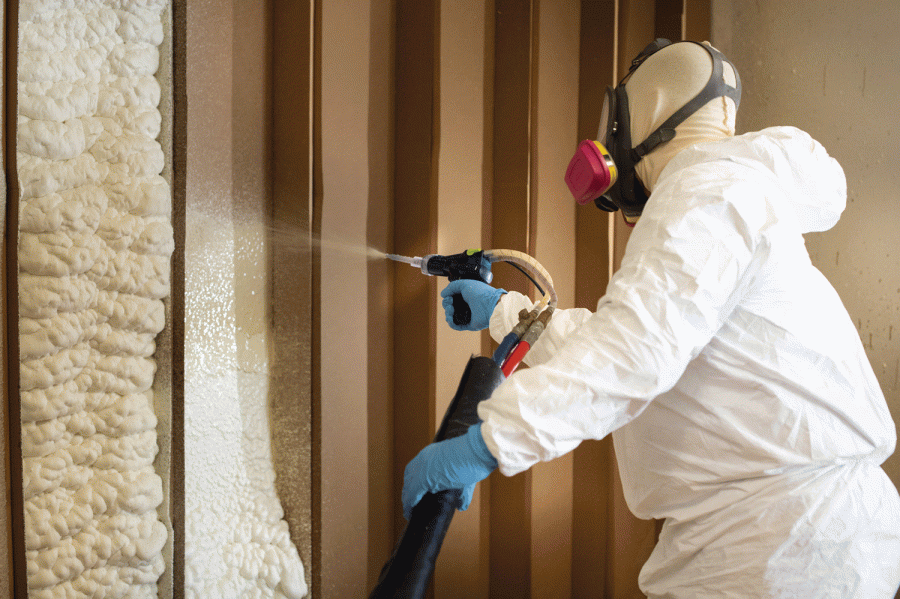
After the investigation, the consulting team reviewed the findings with the following results:
MDI not detected in adjacent rooms
MDI below PELs and OELs at 10’ distance
MDI not detected one hour after spraying
They also noted the overspray was minimal and there was very little chemical odor according to the contractors who were working on site. The lead sprayer from the insulation contractor loved the plastic HandiGun II, and he noted how it was super-lightweight with no down time. He had previously only sprayed high pressure with this being his first exposure to the HVLP foam/plastic gun with a hi-low switch.
The house was completely insulated in approximately the same amount of time predicted if traditional spray foam equipment available today was used.
The safety gear recommendations from this for Handi-Foam HVLP, and previous, testing consist of:
Applicator – cartridge respirator, full face mask, Tyvek suit, gloves
Helper – although MDI levels are below OELs, recommend a half-face cartridge respirator
Ventilation – Sprayed outside, with a professional fan and away from trade workers.
Re-entry to the work zone – one hour
Re-occupancy – re-occupancy times stated are two hours for open-cell foam, and four hours for closed-cell. Continued ventilation is recommended after spraying (strive for 20 ACH)
Interviewing T.J. Peters was extremely informative and his enthusiasm for the industry and its advancements was contagious. The Spray Foam Magazine team wanted to know why he personally felt their new Nitrosys HVLP System was an essential step forward in the industry. “Nitrosys HVLP answers a question that many people haven’t been able to figure out in our industry, ‘How do we make a safer and simpler system for spraying foam?’ We’ve created a system that will continue to allow our industry to grow at a rapid pace, while creating a safer application method and working environment for applicators, other trades, and building occupants.”
Making the applicator’s job safer and in many respects easier, is a great result for everyone. Not only will the spray foam applicator benefit, but so will the industry as a whole. The contractor’s staff safety, in addition to saving them time, will result in happy workers, a faster and easier application and the potential to save money.
Nitrosys HVLP will officially be available for order in the beginning of Q2 of 2020. Nitrosys Plus is currently available along with Handi-Foam HVLP foam systems.
Disqus website name not provided.




